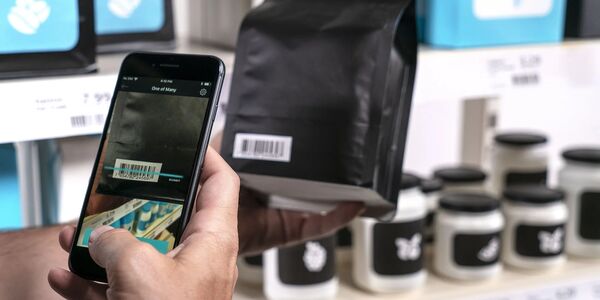December 12, 2023 Industry news
From eco-friendly waters and bubble teas to CBD drinks and low-calorie craft beers, the beverages market is booming. The value of the UK alcoholic drinks market reached a whopping £50 billion in 2022 and is expected to continue with positive growth, with sales forecasted to reach £60.9 billion in 2026. In 2022, the low and non-alcoholic drinks also saw strong growth, with £255 million in volume sales. Last year, half of the UK adult population bought a no-alcohol or low-alcohol product, boosting volumes by 9 per cent.
There are ample opportunities for any emerging drinks brand that is able to combine good products with a strong proposition. To help our members capitalise on these opportunities, we recently joined over 600 emerging brands at the Bread & Jam drinks summit to hear from pioneering founders, industry icons, supermarket buyers and more.
The day was packed with inspiring stories and expert advice but one session we found particularly insightful was the panel discussion on navigating sales channels and routes to market. Featuring representatives from Britvic, Riddles Iced Tea and Mojo, it explored the key routes for challenger brands, common pitfalls, on-trade opportunities, buyer-relations and much more. We have recapped some of the top tips we discovered below.

Distribution strategy
All panellists agreed on the importance of plotting an effective distribution strategy.
A distribution strategy is essentially the plans and tactics you use to deliver your products from the point of origin to the final customer, including all the intermediaries such as wholesalers, retailers, and other supply chain partners.
The panellists top tips and tricks for building an effective strategy included:
- Determine and select the most route to market: this could involve direct sales, using intermediaries or online channels. Who is your core customer and where can you find them? Once you understand your consumer you can determine how best to reach them.
- Identify the appropriate level of market coverage for your brand: this could be intensive (wide distribution), selective (targeted distribution), or exclusive (limited distribution to specific outlets). What works best for you will depend on your capabilities, goals and the stage your’ business is currently at.
- Manage your inventory: having the right amount of inventory at different points in your distribution network is essential for ensuring your’ products are available when and where customers want them. Having too much could lead to excessive holding costs and having too little could result in missed opportunities, so you want to make sure you get this ‘just right’.
- Streamline your supply chain: carefully plan the physical movement of your products and select the most efficient routes and methods of transportation.
- Build relationships: get to know the key players across your distribution channel such as distributors, retailers, and wholesalers. Effective communication and collaboration are crucial for successful distribution!
- Harness the power of trusted data: utilising technology, such as e-commerce platforms, inventory management software and tracking systems will enhance the efficiency and accuracy of your distribution processes. This can be especially powerful when underpinned by GS1 standards, allowing interoperable data to be seamlessly identified, captured and shared at every stage of the supply chain.
Your choice of distribution strategy can have a significant impact on your overall success as it will directly affect how your products reach your target market and how customers access them. With this in mind, the panel recommended viewing distribution as a marketing channel and making sure your proposition is right before developing and investing in your strategy.
As with any robust marketing strategy, you also need to make sure you are able to pivot if required. Constantly seek feedback and let your consumers drive your decision making.

Tailoring your approach
When it comes to communicating your proposition, the panel advised against taking a “one size fits all” approach. Instead, they stressed the importance of tailoring your message to each specific audience, whether that be buyers, investors, stakeholders or the end consumer.
Once you have determined who your customers are, where they are and how best to reach them, stay focused on your chosen channel and learn everything you can.
This will not only prevent you from spreading yourself to thin, it will also help you optimise performance. Engaging in channels where there is an opportunity to get trade feedback can also be very helpful early on.
Good time management is a must. Carefully evaluate your reach and resources and focus on the things that you can control. If there is a knowledge or experience gap, consider bringing in people who have done this before. Don’t rush things. Service the needs of the customers you already have before trying to reach new ones. Be patient when building your brand and keep a detailed record of your progress.
Tempting buyers
Securing a listing with a retailer is a major milestone for any brand. Retail buyers can provide huge opportunities for increasing your market presence, visibility and enhancing your credibility. What’s more, they bring access to a wide range of distribution channels including both physical stores and online platforms.
Retail buyers will typically have a deep understanding of market trends, consumer behaviours and competitive landscapes; knowledge you can leverage to make informed decisions about product development, pricing, and marketing strategies. If possible, build close relationships and constantly seek feedback.

However, to take advantage of the benefits offered by buyers, you first need to reach them. The panel reminded the audience that buyers receive thousands of emails each week so you need to stand out from the crowd. Do your research. Explore their social media presence to gain an understanding their passion points and tailor your pitch and angle accordingly.
They concluded by encouraging the audience to have faith in their products. If they are as good as you believe them to be, send out as many samples as you can and the right buyer will eventually take notice.



